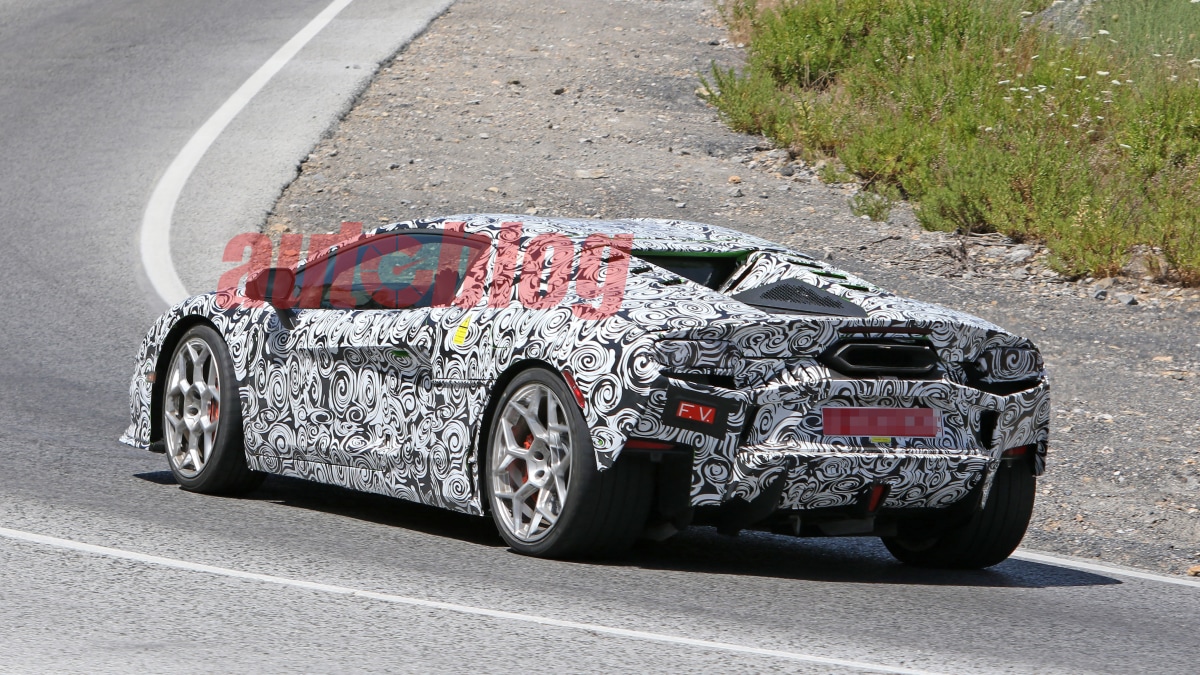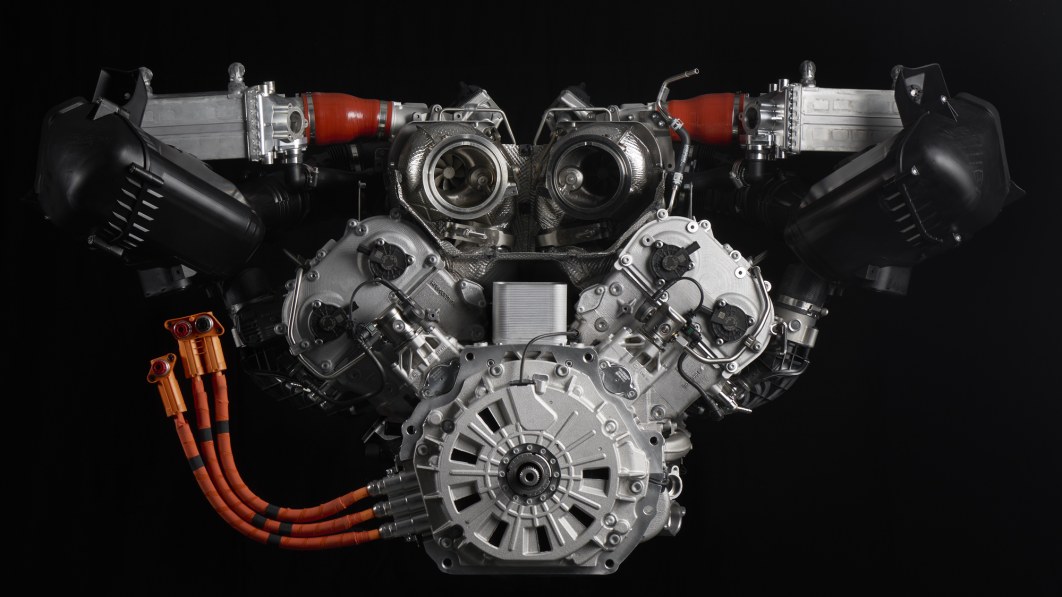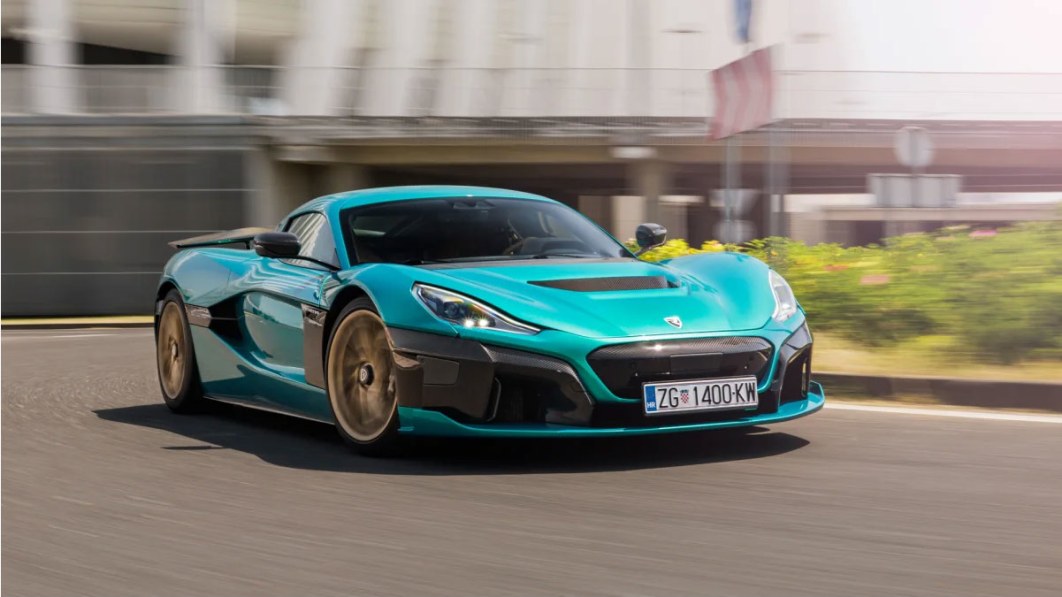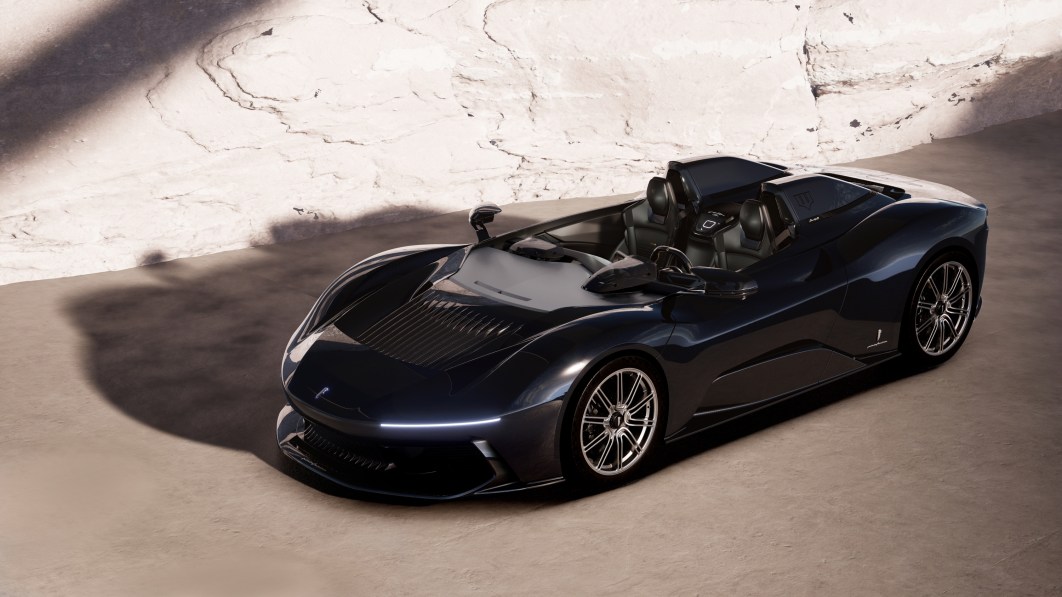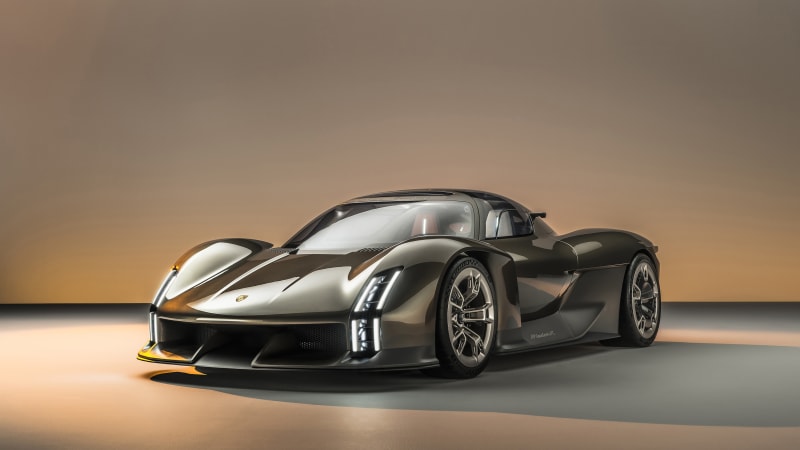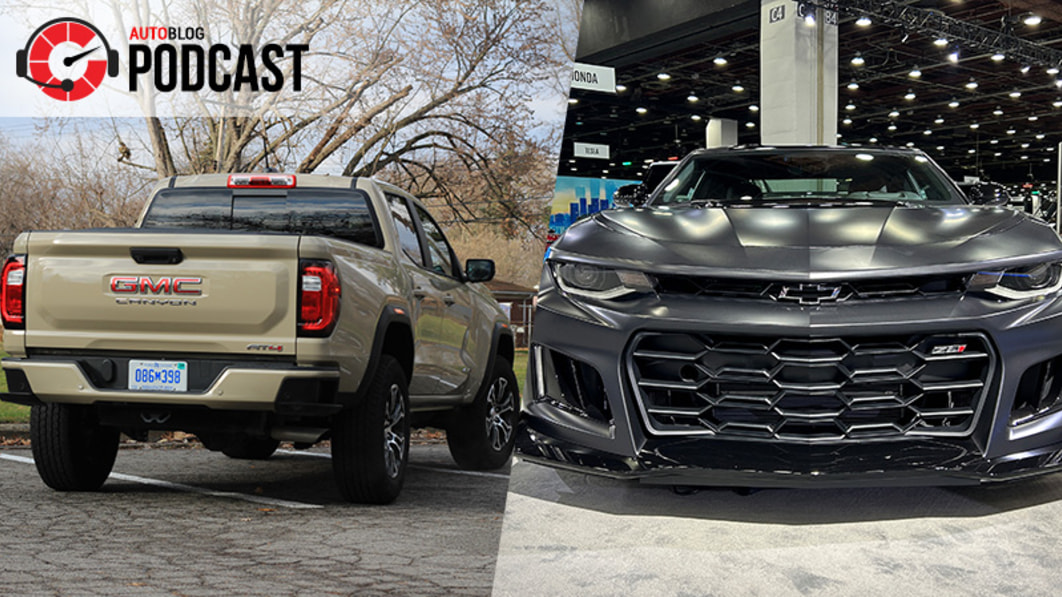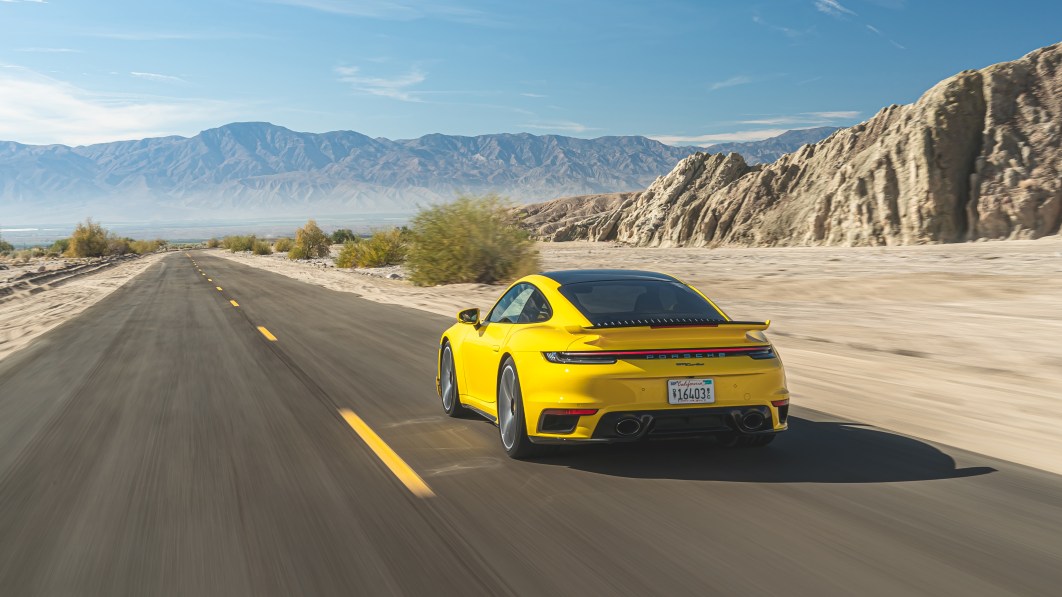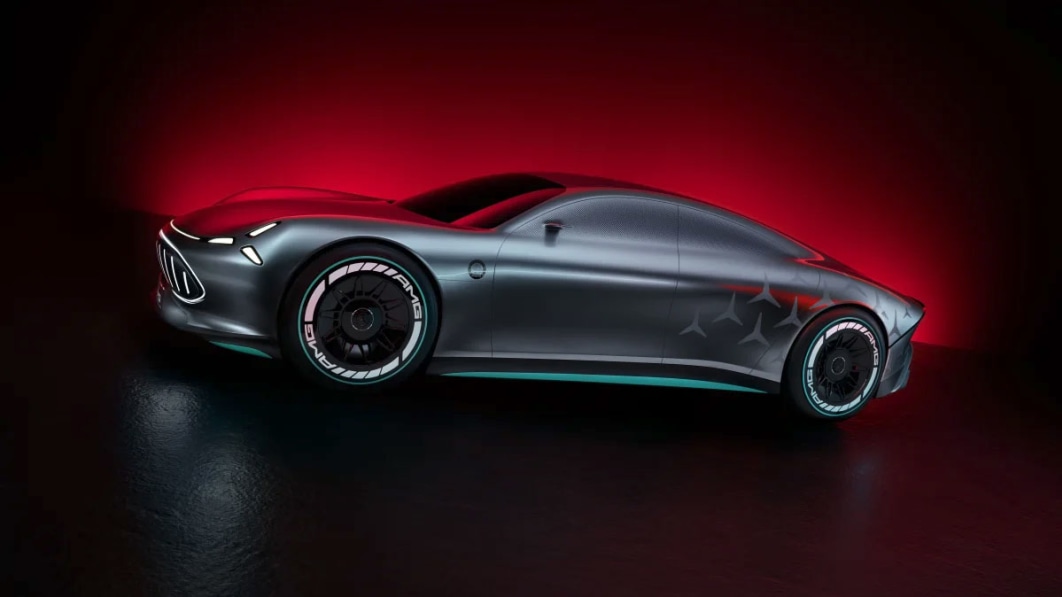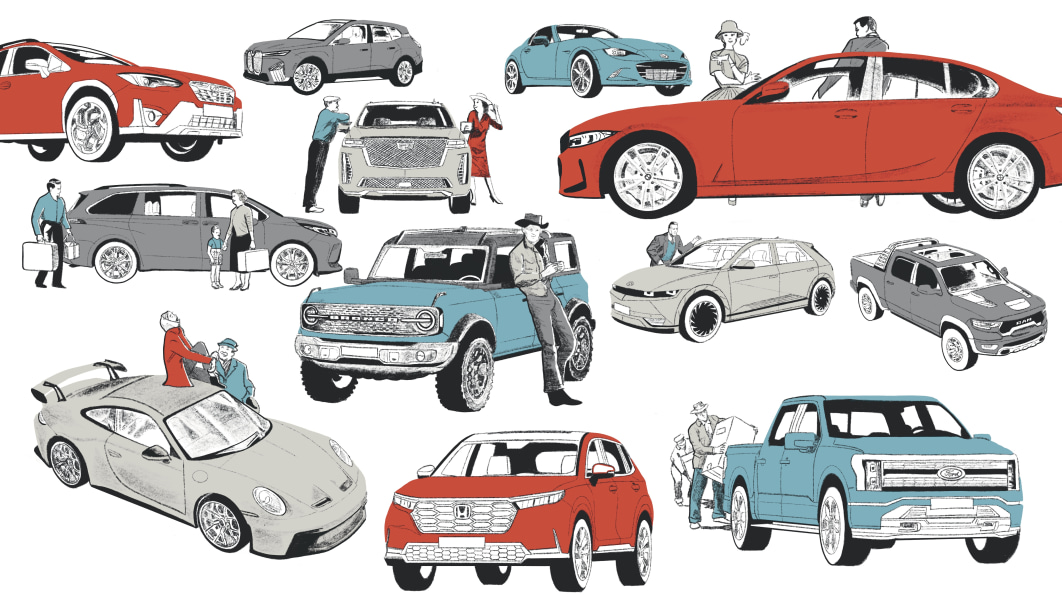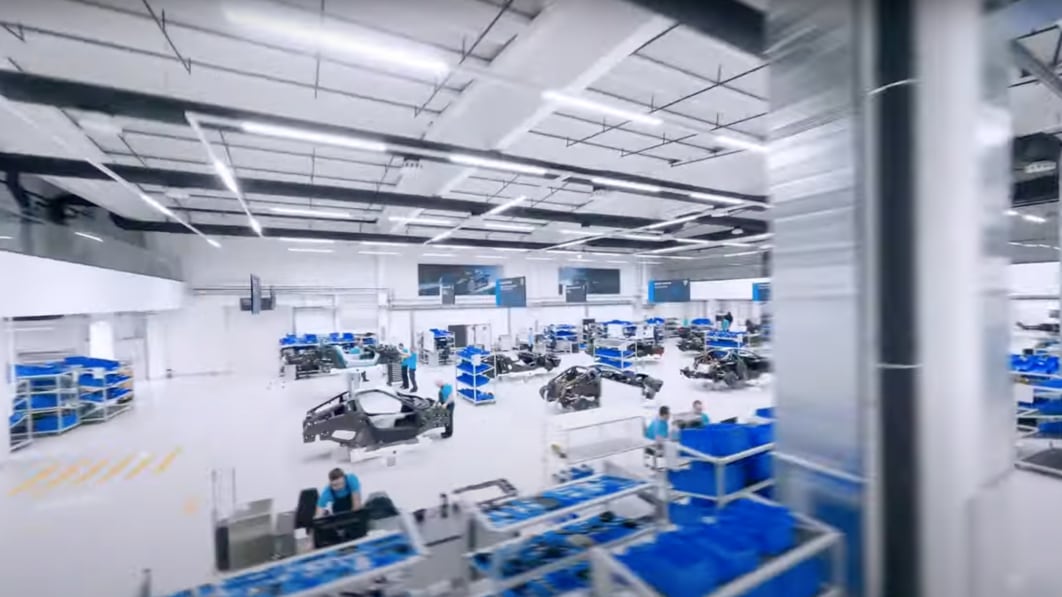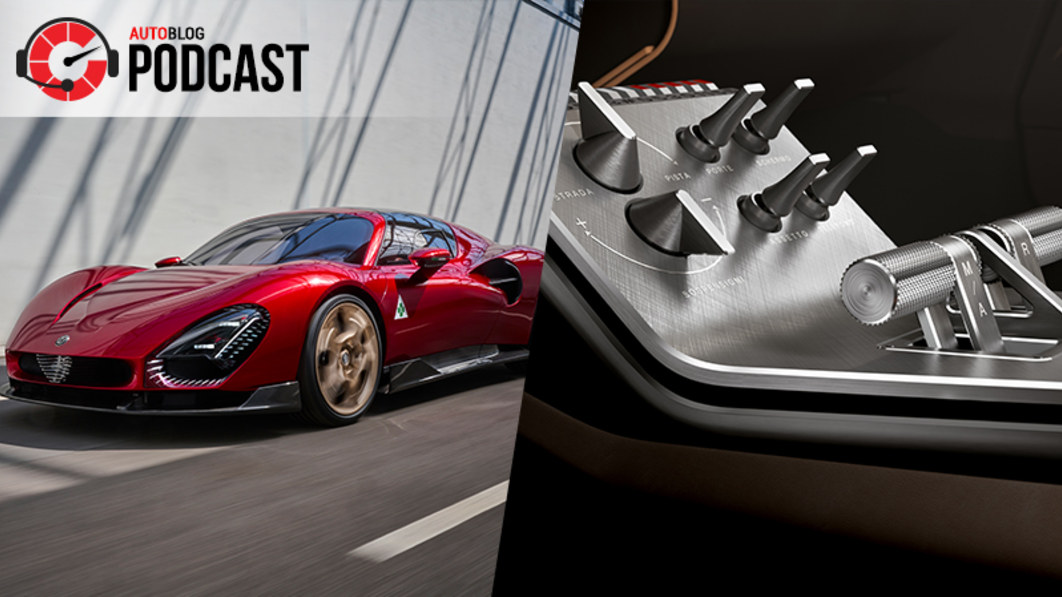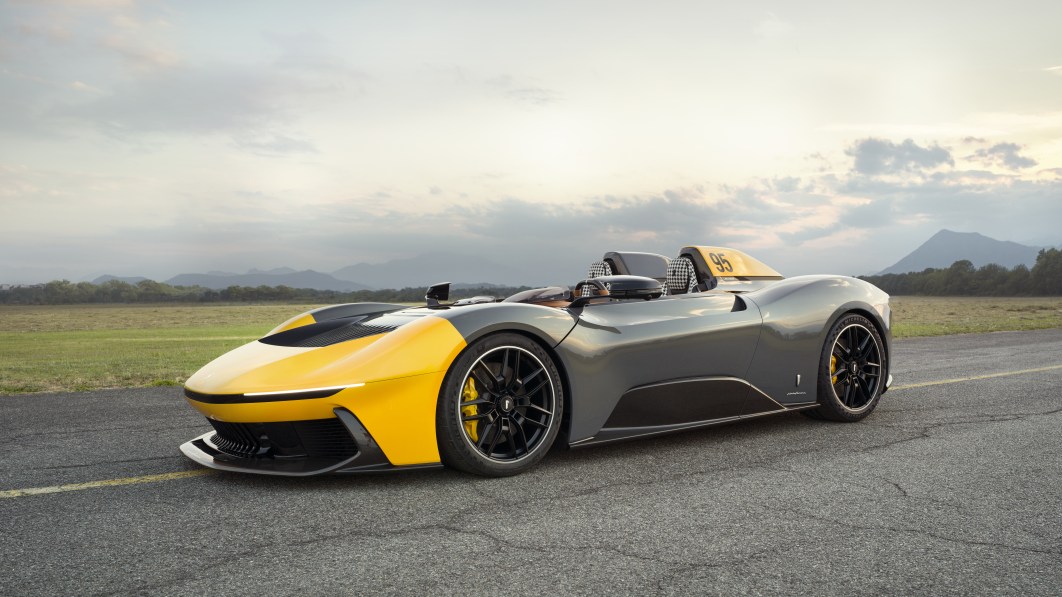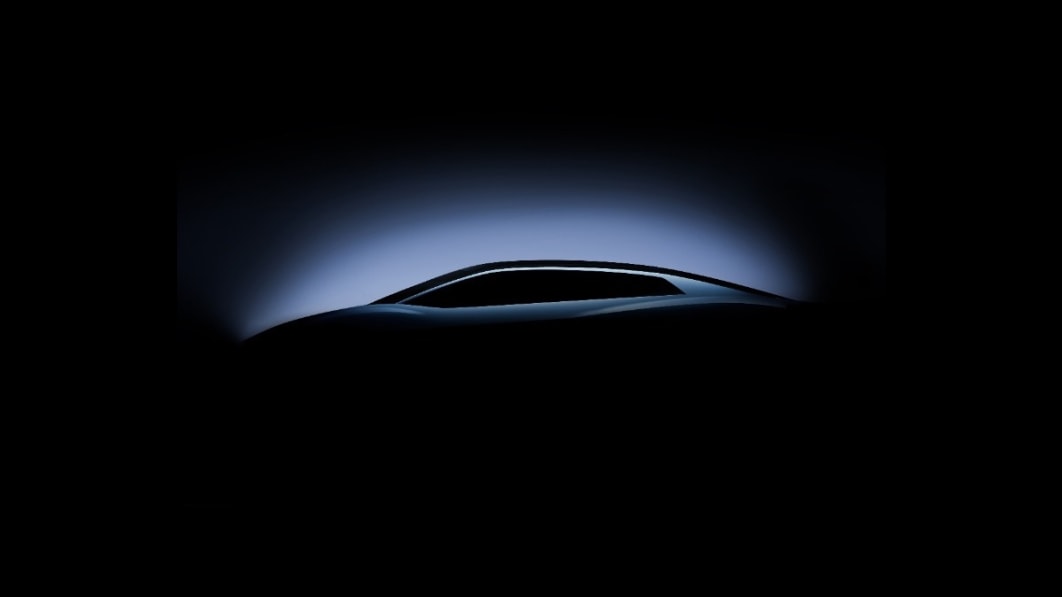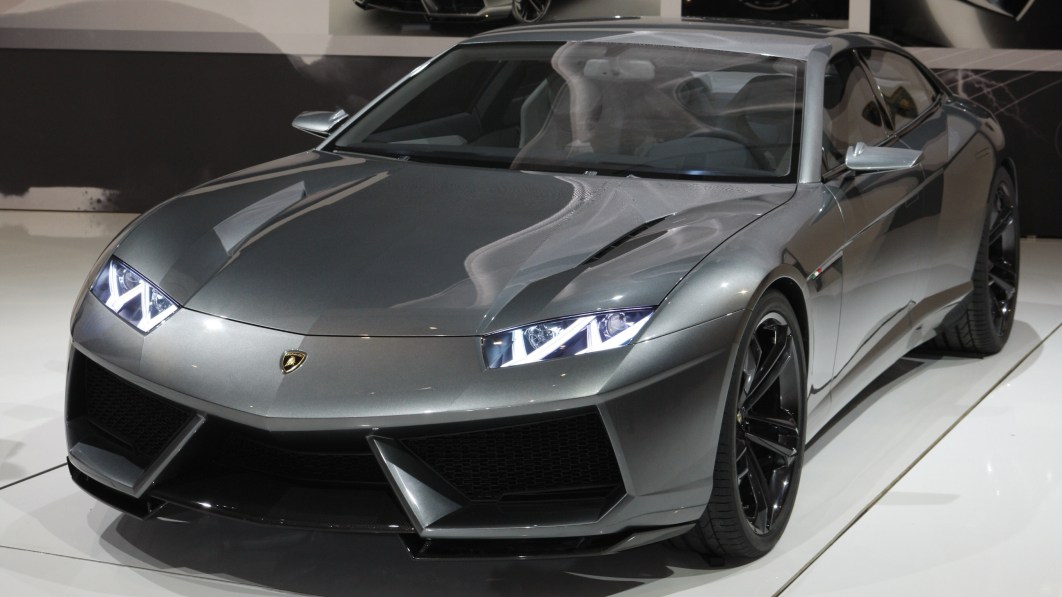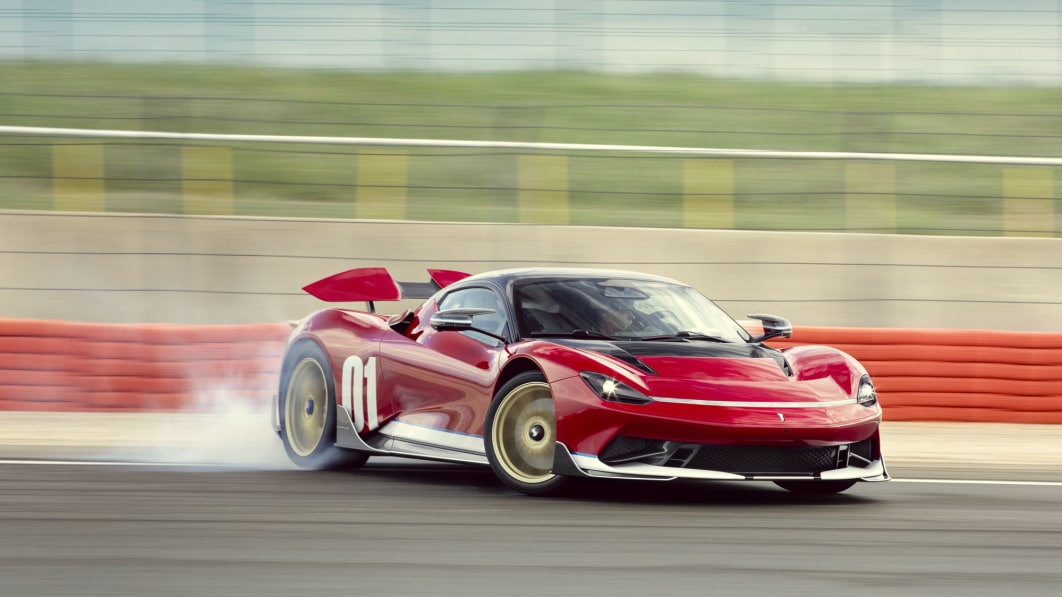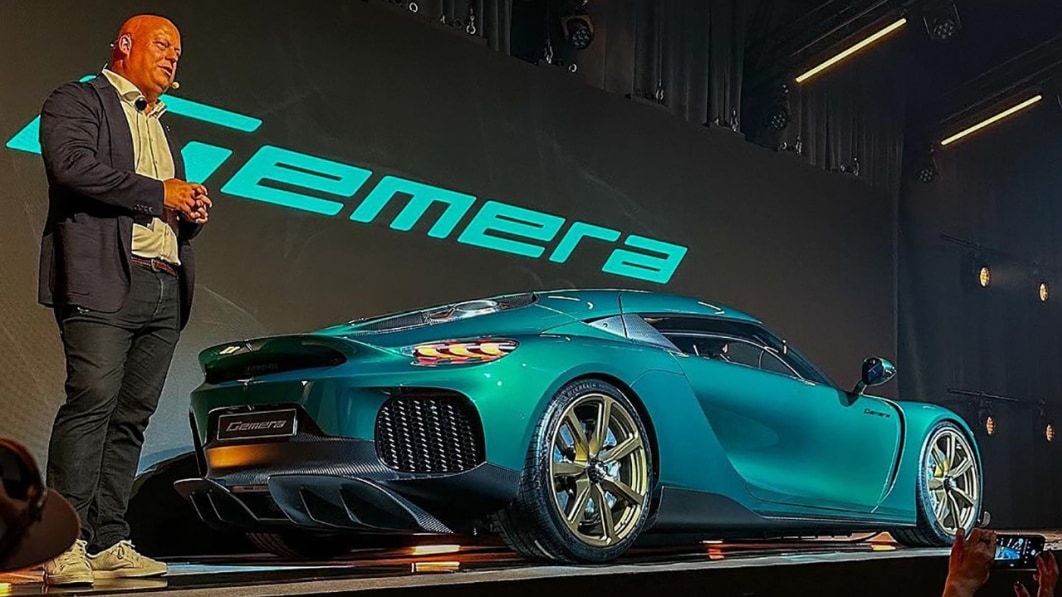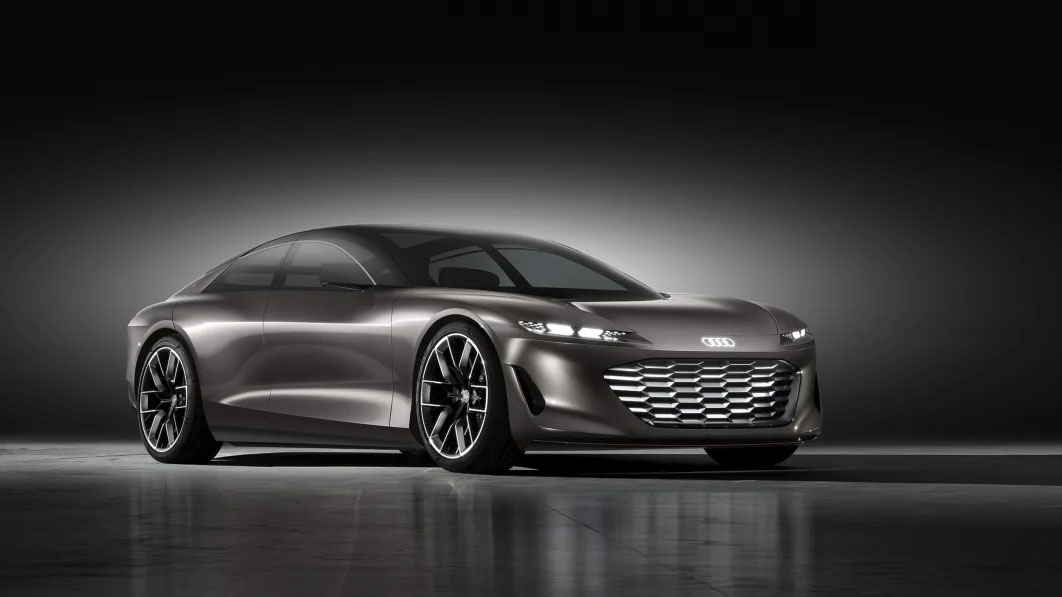The Lamborghini Huracán’s successor is coming in hot with a reveal set to take place during Monterey Car Week in August. We already have the full download on the PHEV powertrain that you can read about here, but now a new set of spy shots provides us with the best design preview yet.
All of the spy photos of this new Lambo so far have shown it with coverings over openings and far more trickery to its finer edges than this latest set. Finally, we get a chance to see this mid-engine supercar’s true shape. Its headlights are fully uncovered and are essentially slits in the front bumper. The shape of the central intake in said front bumper is shown here with massive openings for cooling. Plus, some funky hexagonal running lights are visible in the lower side air intake openings.
This Lambo’s side view is predictably full of sharp creases and funky shapes. Even the rear fender’s air intake features some funky slats in them to add even more drama to the design. The openings in both rear fenders to feed air into the engine bay are huge and should help to keep the 4.0-liter twin-turbo V8 fed.
Around back, Lamborghini has done away with its shrouding of the taillights and given us an even better view of the spicy rear end than before. The chopped rear bumper behind the tires makes for a very aggressive aesthetic. Meanwhile, the huge rear diffuser and lower light integrated into it just screams race car. Its high-mounted exhaust is reminiscent of the Revuelto, which can be said for a number of the styling elements around this Huracán successor. Lastly, we’ll point out the hexagonal LED taillights that are now plenty visible and no longer hiding behind large strips of camouflage.
Look out for the full details on this Huracán successor in about a month’s time, as Monterey Car Week is just around the corner.

